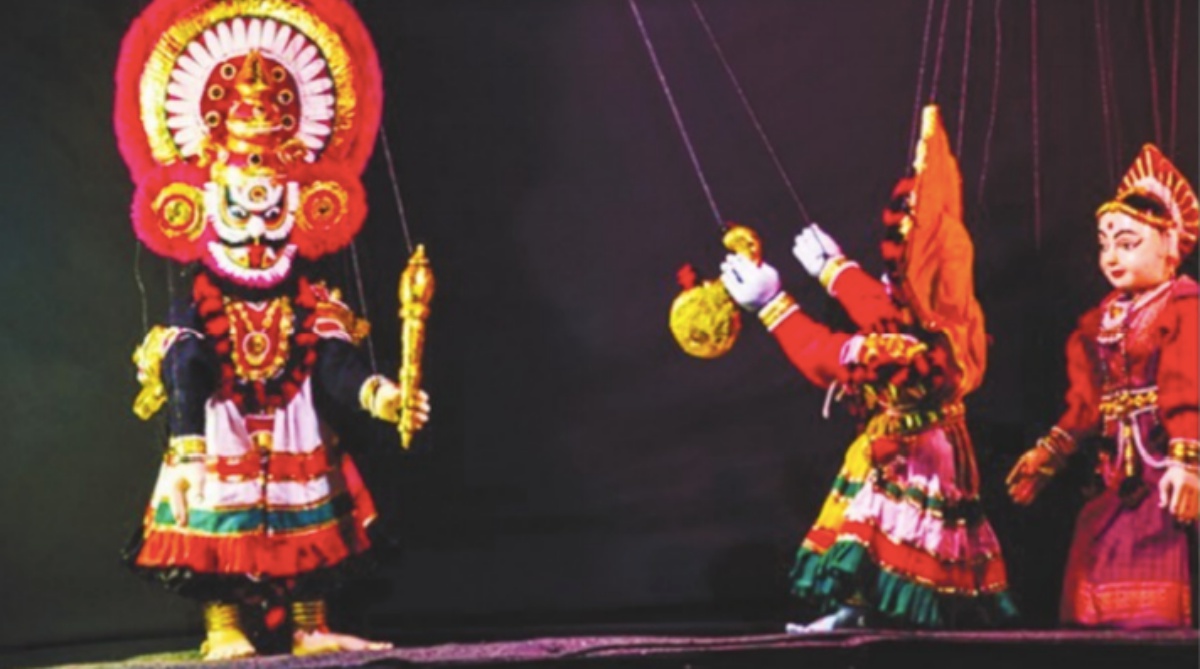It was a great experience to be part of a festival where Sangeet Natak Akademi had delved deep to unearth the wealth of India, from every nook and corner. It was a festival with a collection of high voltage artists, of all the performing arts, showcasing their talents on one platform. Lucky were connoisseurs and people of the media who were present at the second edition of the festival held at the amphitheatre of Gujarat University in Ahmedabad.
Where else could one have got the chance to hear Lok Geetby Hemant Rajabhai Chauhan from Rajkot, one of the most accomplished performers of the traditional music of Gujarat today? His versatility in the rich musical heritage of the region was mesmerising. Not for nothing has he been awarded the Sangeet Natak Akademi Award for his contribution to the folk music of Gujarat. He sang from Kabir’s doha — a lyrical verse format of Indian poetry —“the peace that you get in chanting God’s name is not to be found anywhere.” The song,
Advertisement
Bhole Maharaj Aaj tandav nache was full of picturesque imagery. His daughter Geetha Ben Chauhan won hearts with a Lok Geetabout the exploits of Krishna. A song in praise of the Goddess of learning and an encore Bhajan praising Ram ended his recital. Prahlad Singh Tipaniya of Luniyakhedi village in the Ujjain district of Madhya Pradesh is well versed in the Nirgun Bhajan of Sant Kabir. Before starting he said that he had learnt his music through Vachik parampara, which has percolated from Guru to shishya through generations.
He started with Guru Pranam because there is, as he said, no salvation without a guru and followed it up with Guru Nanak’s doha. Connecting with the audience by first giving a gist of the to-be-rendered song and its philosophy, before actually singing the deeply devotional song, is his forte. He spoke on the philosophy of Bhakti saints like Kabir and Guru Nanak and got the audience totally involved. Sugam Sangeet sung by the octogenarian musician Purushottam Upadhyay swept the audience off their feet. He is a highly popular artist as was proved by the response.
Greatly influenced by musicians like Salamat Ali Khan and Nazakat Ali Khan, Upadhayay began with the natya dhyana shloka, Angikam Bhubanam dwelling on Lord Shiva. After that he took up one popular number after another. The spirit of Dussherah descended on the audience as they danced to a popular Gujarati song. Time limit took a back seat as people danced under the canopy of a star-lit night with peacocks perched on trees.
Parween Sultana, singing in her inimitable style on the penultimate day of this beautiful festival, was brilliant to say the least. She kept the lights on, in order to have eye contact with her listeners, before starting on raag Puriya Dhanesree, establishing that the evening was the best time to sing the raga. She sang two bilambit bandishes and matched it with a drut Khayal,Laage mori lagaan. Her range is indeed her asset. Most importantly she built up the songs she sang meticulously, before revelling in its glory. As she sang Batade koun gali gaye Shyam, she touched a chord in the hearts of listeners.
A soulful rendition of a Meera bhajan ended her rendition. A violin jugalbandi by the talented brother- sister duo of TN Krishnan and N Rajam in Carnatic and Hindustani violin, took the arena by storm. Raga Yaman was followed up with Raga Kalyani by Krishnan. Alaap was followed by bol alaap, tans and jhala in the best musical traditions of both styles. Placement of two musical forms took one to the highest levels of aesthetic bliss. The avoroha of the Carnatic composition had a rich descending order answered in the Hindusthani music with Piya ki nazariya jadu bhari.
T Bhaktavatsalam accompanied Krishnan on the mridangam while Akram Khan accompanied Rajam. The duo also performed ajugalbandiby themselves in the richest legacy of their musical genres. This year is the 150th birth anniversary of Mahatma Gandhi and they thoughtfully played his favourite song, Vaishnovo janatopenned by Narsi Mehta. Remarkable was the Putul Nach where a puppet evoked the spirit of Ganesha before the presentation of Narakasura Vade with traditional string puppet by Yakshagana Bombeyata. Group leader KV Ramesh of Gopalakrishna Yakshagana Bombeyata Sangha, used rod and string puppets with colourful costumes and dresses, presented Narakasura Vadhe from Bhagavatha. Naraka, the son of Bhudevi and Vishnu, who reigned over the underworld, desired to rule over the universe as well as the heavens had won the boon that only his father Vishnu could kill him.
Greatly influenced by demon Banasura he had imbibed evil qualities. His menace was unbearable and so when Vishnu was incarnated as Krishna, he was got rid of. Puppets on horseback; Vishnu riding his Garuda; Krishna and Sathyabhama on their vahana; the blood chilling look of Narakasura himself and of course, the battle and ensuing death of the demon king were watched with rapt attention. This performance was in the Thenkuthittu style of Yakshagana. Dr Omprakash, KV Sudarshan, V Kumaraswamy, KV Chandrashekhara, A Geeta Venu Gopal and Kumar Swamy were the puppeteers.











